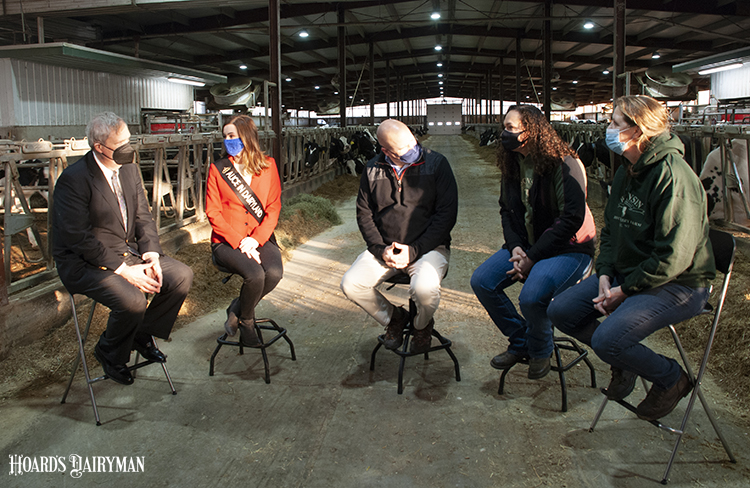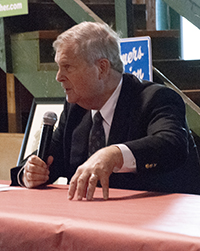
As he spoke with a room of dairy producers and farm organization representatives at a Wisconsin dairy farm last Thursday, USDA Secretary Tom Vilsack emphasized that if a change is going to come to the Federal Milk Marketing Orders, it must come from consensus within the dairy industry.
“The challenge, I think, for us, isn’t so much a willingness to do because we’re willing to try; we’re willing to look for ways to help dairy. The challenge is to make sure we’re doing it in a way that gains consensus within the dairy industry,” he said.
“Frankly, I think it’s up to the dairy industry itself to work through this process. Rather than us at USDA trying to dictate what we think the solution is going to be and maybe make a mistake so that Wisconsin thinks it’s great but Vermont thinks it’s horrible, you all need to work at this and come with a plan,” the Secretary advised.
Dairy looks different and has different priorities across the country, and Vilsack recognized that consensus and compromise is not a simple process. But he also noted that it’s not realistic to ask lawmakers to choose one perspective over another because their support often comes from both groups. A proposal that suits multiple groups would find favor in his office, he said.
“Dairy needs to get in a room and say, ‘Look, this is not a sustainable process. We’re not happy with the overall results here. How do we change it?’ And I suspect it would be a very interesting conversation,” Vilsack said. “But if you all can do that and then come to the U.S. Department of Agriculture and say, ‘This is what we think, collectively, will work,’ then I think you’d find the department very anxious to provide the help and assistance to get it done.
“The only way this works is for the industry to do the hard job of listening to one another,” he continued.
In regard to the specific issue of supply management that is sometimes proposed, Vilsack noted that in Canada where it is used, consumers pay “significantly more” for dairy products. If the U.S. wanted to adopt a system like that, it would have to include a way that consumers did not pay for the support because they would easily be able to move to a product other than dairy with the variety available in the current marketplace.
Farm viability

Other area dairy farmers as well as industry leaders later took the opportunity to address Vilsack during the open forum, with many expressing thanks for the recent updates to the Dairy Margin Coverage (DMC) program. Questions about additional factors of dairy farm profitability, including rising input and labor costs, value-added dairy innovation, exports, and supply chain issues, were also raised to the Secretary.
In regard to supply chain restrictions pushing up input costs, Vilsack reiterated that hours have been extended at some ports, which has provided some relief. The department is also looking into using some secondary ports on the West Coast that he described as better fits for agricultural products.
He is optimistic that the recently passed infrastructure bill will not only prevent these types of issues in the future, but that it will provide good job opportunities for Americans to take advantage of. “I hope we get back to a day when those who work with their hands are as well-respected and thought of as those who work with their heads,” he shared.
When asked about the value of small and mid-sized farms, Vilsack emphasized the importance of having additional revenue streams for these operations to support their business. He identified opportunities such as climate smart practices, precision agriculture, conversion of waste products, and supporting local and regional food systems with value-added products.
He shared a statistic that illustrates the agricultural trend of consolidation and that he called “troublesome”: 89.6% of American farms today don’t generate the majority of income for the people that farm them.
“Over time, as we create more revenue streams and we create more information about how to be precise, our hope is that reduces that number and provides more hope and opportunity for folks who are small and mid-sized,” Vilsack described.








